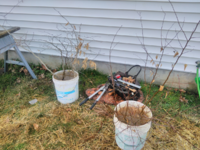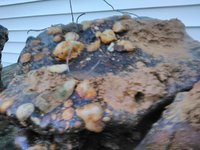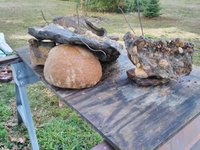You are using an out of date browser. It may not display this or other websites correctly.
You should upgrade or use an alternative browser.
You should upgrade or use an alternative browser.
Sapling Division: Beech, Oak, Sweetgum and Tulip Poplar Forest Type
- Thread starter Gabler
- Start date
Gabler
Masterpiece
Needless to say, I won't be using every single one of those trees, but I'll be selecting a large number of them for the composition and replanting the rest in a field that my dad is trying to develop into more woodlands.
HorseloverFat
Squarepants with Conkers
That gave me some, “Kid in a candy store-itis”

I’m looking forward to your further documentation!
I’m looking forward to your further documentation!
Gabler
Masterpiece
That gave me some, “Kid in a candy store-itis”
I’m looking forward to your further documentation!
Thanks. I'm looking forward to spring, when I can start putting things together. All that digging through clay should put me back in shape.
HorseloverFat
Squarepants with Conkers
Hmmm... what are the local deposits like?clay
But I understand... it’s hard to watch em, when you have plans for them.
Sometimes I find myself “making projects” for “project’s” sake...
...a horrible curse.
Gabler
Masterpiece
Gabler
Masterpiece
I plan to spend my time this winter practicing my own ceramics skills. I first took an interest in bonsai in middle school, but I had to stop during college, since I couldn't keep trees in a dorm. Now that I'm one semester away from finishing grad school, I'm getting back into bonsai, anxious to dig up some of the trees I planted in the ground a decade ago.
Kanorin
Omono
Looks like you've got a lot of great material waiting for your shovel this spring!
I, but more so you, dig it!
Just make sure everything you use for this competition is at or below 2.5 inches trunk caliper (measure 2 inches above soil or highest surface root) at the time when you collect it.
I, but more so you, dig it!
Just make sure everything you use for this competition is at or below 2.5 inches trunk caliper (measure 2 inches above soil or highest surface root) at the time when you collect it.
Gabler
Masterpiece
Looks like you've got a lot of great material waiting for your shovel this spring!
I, but more so you, dig it!
Just make sure everything you use for this competition is at or below 2.5 inches trunk caliper (measure 2 inches above soil or highest surface root) at the time when you collect it.
Yeah. You'll note the stuff in the pictures is mostly under an inch, though a few are approaching two inches.
Gabler
Masterpiece
Gabler
Masterpiece
I collected a bunch of saplings and wired them onto the rocks. I expect some might not survive collection, since it's hard on a tree to go straight from the ground to a rock planting. I have more saplings in reserve to replace any trees that die. For now, I have American beech (Fagus grandifolia) in front and ironwood (Carpinus caroliniana) in the back of each section of the planting. The little sprig of leaves is a mountain laurel (Kalmia latifolia) seedling. The idea is to use the latter species' smaller buds and leaves to create an illusion of depth. It might work. It might not. If in two years' time I'm not satisfied with the effect, I'll re-assemble it with only one species as per the general rule in composing forests. Note also that the stones will later be arranged in levels starting with the group to the left at the highest level, then the middle group, and then the rightmost group with the water feature at the bottom. The idea is to simulate a sloped stream bank using display stands of slightly different heights. Until I can get around to designing stands, I have the rocks wedged at approximately the correct angle using smaller rocks for support.




















Gabler
Masterpiece
I’ve been learning this spring that beeches are extremely delicate when collected. Some of the trees in this planting simply haven’t woken up. The ones that have are sparse with burnt leaves. I’ll let it go and see how it fares, but next year, I might disassemble it and rearrange the living trees onto just the middle rock, repurposing the other two rocks as native pots for the other contest. I’m certainly mot calling this a success at the moment.


Gabler
Masterpiece
I’d say this is a great example of what happens when you have no real plan, and instead just slap it together.
HorseloverFat
Squarepants with Conkers
Gabler
Masterpiece
@Maros once told me that buds/new growth on collected fagus is not necessarily a sign of survival.. so to make sure to leave MANY dormant buds on them when collecting... or something like that.

Yeah. My other beeches have all enjoyed the humidity and protection of my new greenhouse tent thing. These wouldn’t fit.
Gabler
Masterpiece
A quick update. It turns out those conglomerate stones won't hold wires glued on with epoxy. The epoxy pulled off flakes of sandstone as it detached from the rocks. Since not all of the trees survived anyway, I moved the survivors into plastic nursery pots and stored the stones for later. I'll either have to figure out a better way to attach anchor wires or use trees with stable root bases that won't need wires to hold them in place. I'm hesitant to drill through the stone, since I suspect it will crack in half.
Similar threads
- Replies
- 10
- Views
- 4K
- Replies
- 9
- Views
- 2K
- Replies
- 3
- Views
- 1K










